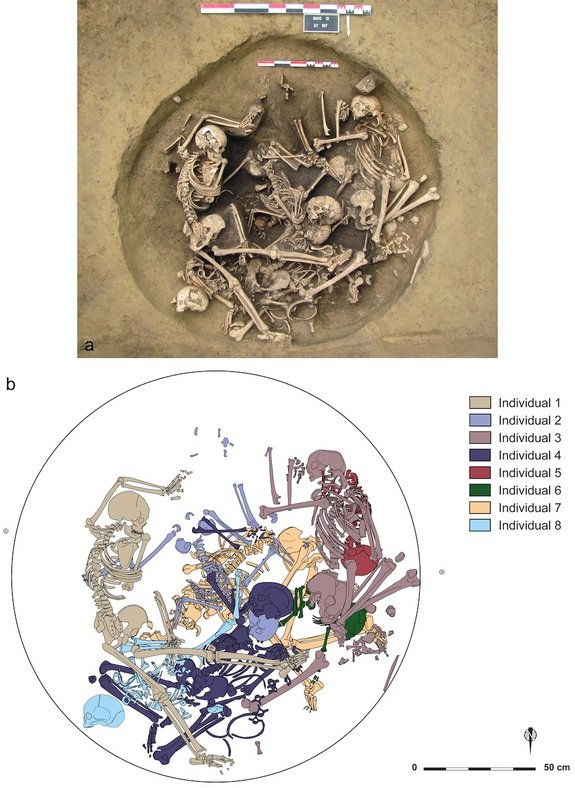MessageToEagle.com – An ancient pit filled with severed human arms, hands and fingers has been unearthed in France.
The nearly 6,000-year-old pit was found near the village of Bergheim, which sits near the border with Germany.
“The discovery of Bergheim is the witness of a very violent event, which took place at a specific time,” said study co-author Fanny Chenal, an archaeologist at the University of Strasbourg in France. “Its unique and extraordinary nature does not allow or help us to better understand the daily life of these people.”
And though Chenal and her colleagues don’t know exactly what spurred people to such gory acts, the likeliest explanation is a violent skirmish or war, the researchers speculate in the December 2015 issue of the journal Antiquity. [See Images from the Gruesome Pit of Limbs]
Grisly find
Like many of Europe’s archaeological treasures, the pit was discovered in 2012 by chance. An archaeological surveying company was overseeing excavations in advance of property development in Bergheim when they uncovered a 5-acre (2 hectares) area pockmarked with ancient pits called silos. All told, the team uncovered 60 silos, 14 of which contained human bones, the researchers wrote in the paper.
One silo, called pit 157, was utterly unlike the rest. The pit, about 5 feet (1.5 meters) in diameter and 6.5 feet (2 m) deep, was filled almost completely with human bones.
The oldest deposit, dating to about 5,335 years ago, contained at least seven severed upper limbs, including severed and dismembered hands, fingers and arms. One of the seven limbs came from a child between 12 and 16 years old. All of the bones show cut or amputation marks, made either with a knife or an axe.

Soon after discarding the severed limbs in the pit, someone had tossed the bodies of seven other people into the pit. Those bodies included two adults and four children, including one tiny infant not more than a year old. The remains at the bottom of the pit belonged to a middle-aged man who had his arm cut off. He had also sustained several blows, including a head wound that likely killed him, the researchers wrote.
Long after the bottom layers of boneshad settled over time, around 5,245 years ago, someone put the body of a woman into the pit. Unlike the badly disfigured bones below, this body showed no signs of violence or trauma. The pits differ dramatically from the surrounding pits, which contain bodies with little sign of violence, the researchers wrote.
“Judicial sentence and war are the two main hypotheses for explaining the amputations,” Chenal told Live Science in an email.
While the team can’t formally exclude the idea that Neolithic peoplewere meting out a brutal form of justice, comparisons to other, similar finds and historical data suggest war is a likelier explanation, she added.
Extraordinary event
The people who met such violent deaths were likely farmers who also herded animals and lived in villages, Chenal said. While in the past, archaeologists painted a picture of Neolithic life as idyllic and egalitarian, newer finds paint a far darker picture.
Credit: F. Chenal et al, Antiquity 2015
“Neolithic societies are stratified societies and ‘war’ (armed conflicts) were probably very common,” Chenal said. “Furthermore, we have other clear evidence of violence for the time, when the limbs and bodies were deposited.”
Still, the extraordinarily gruesome find is fairly unique, and no other pits from the time show such levels of extreme violence. As such, there’s no way to know whether such ultraviolence was an isolated incident, she said.
MessageToEagle.com via Live Science
This article was origanlly published on Live Science – One of the largest science sites on the internet, illuminating life and technology through the lens of science with daily news and analysis of discoveries and innovations, as well as reviews of health-tech products.






